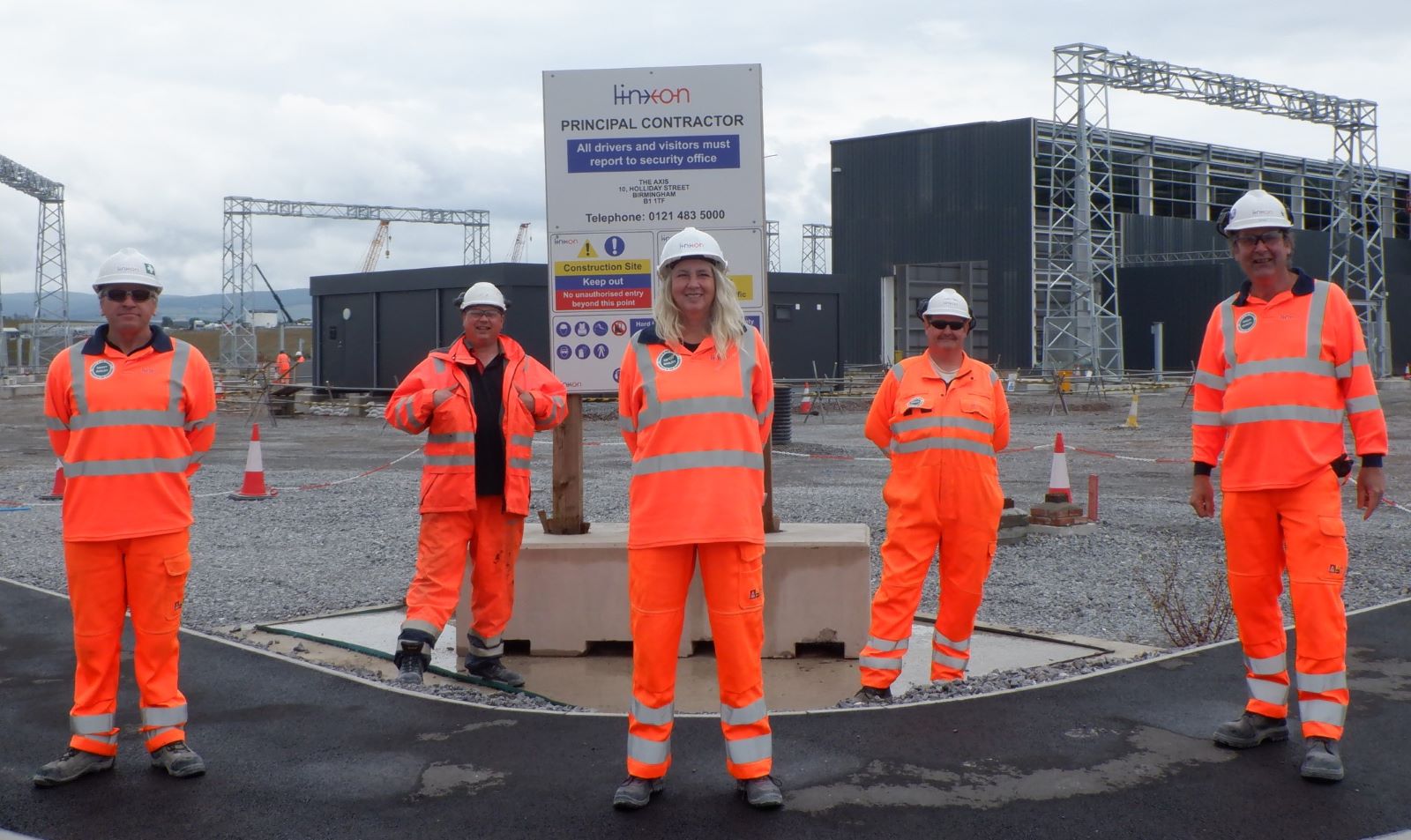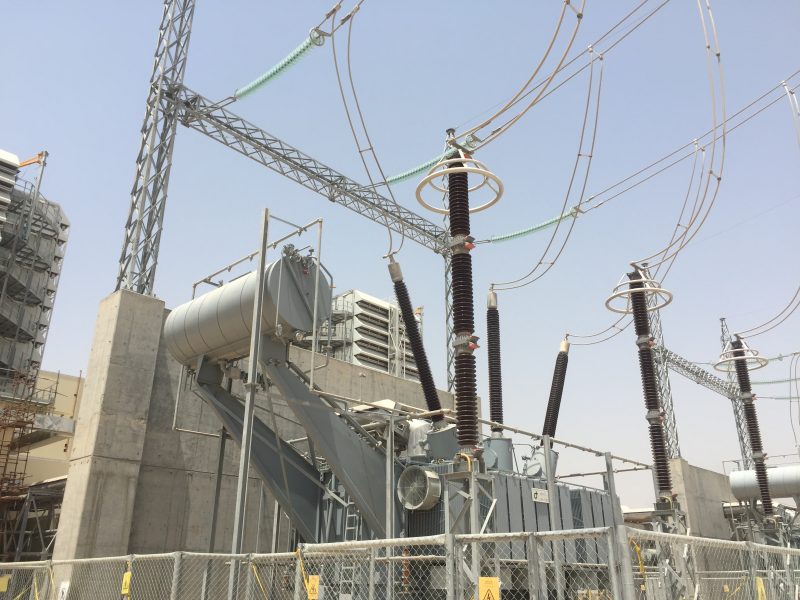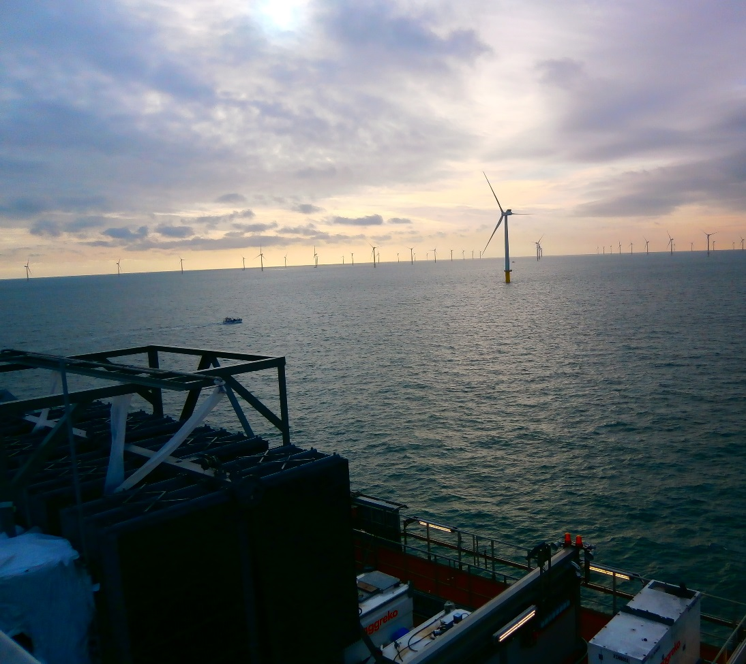With adaptations to Covid-19 restrictions making complex substation construction projects even more challenging, Linxon brings on board its extensive experience in project planning and management, accessibility and transport logistics, and site safety to ensure operations run smoothly. Our ongoing projects in Stockholm and South West England illustrate Linxon’s project excellence.
In February 2020, in the Mårtensdal area of Stockholm, construction work had just begun on the new 400-kilovolt gas-insulated switchgear (GIS) Skanstull substation. At this space-constrained site, Linxon and its civil works subcontractor Skanska, had started excavating to around 15 metres below ground level. Meanwhile over in South West England, at the Shurton substation for the Hinkley Point C power station, the superstructure for the hall that houses the GIS had just been put in place.
Then came the Covid-19 pandemic and a period described in the International Energy Agency’s World Energy Outlook 2020 as causing “more disruption to the energy sector than any other event in recent history.” Nevertheless, Linxon rapidly adapted to the changed on-site circumstances and health and safety conditions, and construction continued on both projects. The GIS arrived at the finalized hall on the Shurton site in January 2021, and the excavation works continued for Skanstull, as this video shows.
Investment in electricity grids for a changing energy world
As the World Energy Outlook 2020 outlines, many uncertainties still remain for the coming decade and the future of the energy sector will be shaped by how the world responds to the Covid-19 crisis. The outlook explores different pathways out of the crisis, explaining that although global energy demand dropped in 2020, it is set to rebound through this decade. Prior to Covid-19, energy demand was projected to grow by 12% between 2019 and 2030. Growth over this period is now forecast at between 4% and 9%, depending on the scenario the world takes out of the crisis.
The report also points out that electricity grids could prove to be the weak link in the transformation of the power sector, with implications for the reliability and security of electricity supply. For example, the projected requirement for new transmission and distribution lines worldwide in one of the report’s scenarios is 80% greater over the next decade than over the last 10 years. This indicates that robust grid investments will be required. Linxon’s Skanstull and Shurton substation projects demonstrate how such investments are already being made to help strengthen the Swedish and UK transmission grids as a means to tackle projected increases in energy demand.

Skanstull and Shurton: part of national energy plans
Sweden is currently seeing a new era of transmission grid modernization up and down the country, with upgrades required to its infrastructure, some of which dates from the 1940s. Major changes are taking place in and around Stockholm, where for example a new 400 kV ring as well as a cable tunnel under the city centre are being constructed. The city’s grid modernization plan, which goes by the name of Stockholms Ström, will be delivered in 50 separate projects over 20 years and benefit around 1.5 million citizens. The new Skanstull substation that Linxon is building, with all products supplied by Hitachi ABB Power Grids, is part of this plan and is set to go into service in 2023.

Meanwhile, over in the UK, the 400-kilovolt GIS indoor substation at Shurton – which Linxon will design, manufacture and install – is part of Hinkley Point C, the UK’s first new nuclear power plant project in a generation. It is expected to provide 7% of the country’s electricity needs when it powers up in 2025. The UK’s ambition is to achieve net zero carbon emissions by 2050 and this low-carbon energy source will play a role in meeting this target. The 57km Hinkley Connection Project is also making use of underground cable, like Stockholms Ström, and will feature the first new design for pylons in the UK for almost a century.
When complexity comes with the territory

Logistical planning and project management are meticulous for both projects, which have complex settings even before the restrictions around Covid-19 come into play. The site in Stockholm is small and narrow (the building area is just 63×24 metres), being located near the popular music and activity centre Fryshuset as well as numerous adjacent construction projects, including a new metro station. “The substation, which has a tight cable entry on its lower floor and control and protection equipment on the upper floor, is being built partly underground to save space, while site accessibility also requires careful planning,” says Ingela Hålling, Managing Director of Linxon Sweden.

Accessibility is similarly complex at the Hinkley Point C location, where total daily vehicle movements onto the Shurton site are strictly limited, meaning that project deliveries have to be planned weeks in advance to avoid construction delays. “As a hub organization, we can pull onto the resources and expertise within other countries worldwide,” explains Mohammed Tageldin Younes, Head of Engineering for Linxon in the UK. “This allows us to be flexible and very responsive in terms of addressing client requirements and changes on a day-to-day basis.” He adds that the Shurton project also makes maximum use of the available space, with the compact indoor GIS technology enabling footprint reductions of up to 70% compared to conventional air-insulated substation designs.
Both projects also involve detailed transport logistics planning, particularly for the large transformers to be installed in the substations. The 360-tonne transformers for Skanstull are too large to be transported across the centre of Stockholm. “They travel firstly via canal barge and then we have to coordinate with the nearby tramline and take them over the new metro line site,” Ingela says. “We are experienced in managing this complexity and the high number of stakeholders involved.” At Hinkley Point C, the transformers are also transported via waterway and tidal movements harnessed to lift the equipment off the barges. Mohammed says: “We had to cater to that in the design in terms of structure and support. So far, we’ve never encountered a situation where we have not been able to meet the transportation requirements.”
Health and safety as top priority
HSE is top of mind on both projects, as is complying with strict Covid-19 regulations. This involves, for example, wearing the correct PPE, maintaining a safe distance, following visitor regulations, eating at separate times and temperature screening. At other construction sites, Linxon is also exploring the use of drone technology to carry out site inspections.
“One of our major risks was that construction would be stopped due to Covid and we’re pleased to say that no-one has been infected at our site,” Ingela says. “We’ve also seen that good collaboration between us, our customers and our suppliers is key”. She mentions Linxon’s safety routines like Step Back being introduced to sub-suppliers as an example. Step Back is a point-of-work risk assessment, where site personnel are asked to take a few minutes to step back, assess the current state of the site and fill in a short questionnaire.
Mohammed also underlines the need to be in full cooperation with all parties when it comes to HSE at the Shurton site, where the teams have reached the outstanding milestone of 760 perfect days. This was one of the reasons why they received an award for proven excellence in safe behaviour and processes from customer National Grid. They were also recognized for supporting mental health, having built a wellbeing garden where personnel can take a break and experience moments of calm and mindfulness on a busy site. James Goode, National Grid’s Project Director for Hinkley Point C, summarized the work of the project teams by stating: “You should all be immensely proud of what you achieved over the last 12 months at Shurton.”
As Ingela and Mohammed point out, it has been a difficult year for everyone and being able to successfully execute such complex projects in these challenging circumstances – underlining Linxon’s role as a valuable and reliable supplier – is reward enough. With these two critical infrastructure developments now continuing to take shape in Sweden and the UK, they provide exciting proof of how the future electricity grid can be strengthened to help meet growing demand.





